We are still a little under a month before Nintendo disables the ability to add funds to your Wii Shop credit to their aging Shop Channel up to the ultimate shut down in January of next year. This guide will cover the must-haves of the SEGA Master System and SEGA-related Virtual Console Arcade titles. While both haven’t received nearly as many Genesis or Mega Drive titles SEGA put out some notable releases you can’t get anywhere else. In addition we’ll be checking out screen setups for those who want the ultimate retro gaming setup to those who can’t break away from their modern HD setups. The Wii provides solutions that will work for everyone who has an interest in SEGA’s vintage lineup.
All screenshots are captured on real Wii U hardware outputting at 720p downscaled to 480p. You’ll also find Sonic Retro and SEGA Retro articles to check out for additional information as well as box art and manual scans you don’t get to see in these re-releases.
SEGA Master System Games
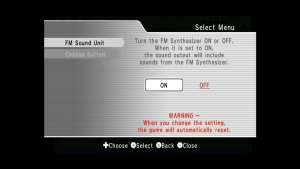 SEGA’s first attempt at the console market outside of Japan resulted in a rebranding of the cartridge-based SEGA Mark III. It was not as popular as the Mega Drive or the Genesis. As a result the system saw limited releases on the Wii Shop leaving a small selection of 15 games to pick from. While it’s missing notables like Zillion, there still remains a few titles worth checking out.
SEGA’s first attempt at the console market outside of Japan resulted in a rebranding of the cartridge-based SEGA Mark III. It was not as popular as the Mega Drive or the Genesis. As a result the system saw limited releases on the Wii Shop leaving a small selection of 15 games to pick from. While it’s missing notables like Zillion, there still remains a few titles worth checking out.
Master System games also have a few enhancements most other Virtual Console games don’t have. All Master System games on the Virtual Console feature a rapid fire toggle for both action buttons. When using a Wii Remote hold A and B while pressing 1 or 2 to activate or deactivate rapid fire for each respective button. You can also turn on FM Synthesis for games that support it. By pressing the ‘-‘ minus button you can activate a “Select Menu” that lets you change this option. Keep in mind that changing this setting will force you to reset the game.
Sonic Chaos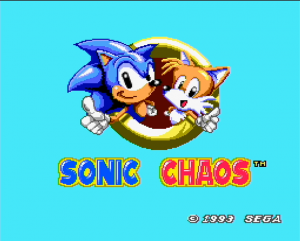
There are countless ways to play Sonic the Hedgehog games from the Mega Drive and the Genesis. That’s not the case with playing a Sonic game on the Master System. They are essentially conversions of their respective Game Gear releases. The Master System versions benefit from a larger screen space and without having to look at the Game Gear’s blurry screen. Because of the differences in hardware as well as attempts to make the games less frustrating the games lack the Game Gear’s more capable color pallette and sound while making certain changes to provide a less frustrating experience. The benefits make Sonic’s handheld adventures much more tolerable to go through as a result. Of the three platformers that saw a Master System release, Sonic Chaos comes out as arguably the best Sonic platformer for both platforms. You’re able to play as Sonic or Tails as you go through your Sonic gameplay checklist of loops and launch off ramps along with added gameplay elements such as character-specific abilities and items. Sonic can quickly fly over levels with his rocket shoes or Tails’ ability to fly in the air for a brief period of time. If physics of a Sonic game are a priority for you, the Game Gear series’ slower pace and more scripted gimmicks will likely turn you off. Plus it’s less difficult overall compared to the other two, but I’m willing to bet you’ll want to be able to spindash and don’t want to deal with one-hit boss fights. Plus Sonic Chaos’ levels shows off unique themes you don’t get to see very often such as crystal caves, sky gardens, and even a mechanized Green Hill! (Even if it doesn’t really look like Green Hill…) The reduced difficulty makes it easier to get into compared to the previous, more frustrating, Sonic games on the Master System, with Tails being easier to play thanks to his flying ability and added continues.
[Sonic Chaos Sonic Retro Article]
Alex Kidd in Shinobi World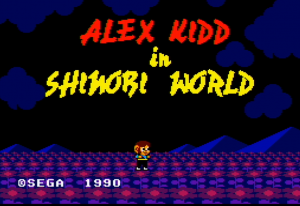
Alex Kidd was SEGA’s answer to Mario and while he was prominently featured until a certain blue hedgehog helped SEGA reach their footing to go against Nintendo. Alex Kidd in Shinobi World is not only the last Alex Kidd game, it also happens to be a parody of SEGA’s Shinobi arcade game. The premise is that Alex Kidd’s girlfriend gets kidnapped by a mysterious Dark Ninja and becomes posessed with the powers of the ancient White Ninja. Unlike other Alex Kidd games this is a straight up platformer without any impossible “janken” matches or anything else to slow the game down. Instead Alex Kidd is given a sword, collectible ninja daggers and a host of moves. Wall jumps. Pole swinging. Ninja magic. All this makes for an Alex Kidd game that is not only tolerable, but completely playable even though it is essentially a simplified version of Shinobi as it parodies levels, enemies and bosses you encounter from the arcade original.
[Alex Kidd in Shinobi World SEGA Retro Article]
Wonder Boy III: The Dragon’s Trap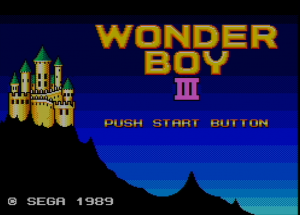
There’s a reason The Dragon’s Trap is considered the crowning jewel of the Wonder Boy franchise. You’re probably familiar with Lizardcube’s faithfully updated version of the game on modern platforms and so far the Wii Shop is the only way to play the game in it’s unaltered state. Heck you can use the passwords between both versions if you’d like. Wonder Boy’s first console exclusive has our lead character going through the end events of Wonder Boy in Monster Lair where he becomes inflicted with a curse to become a lizard-man. Wonder Boy then explores the land to hunt down the five dragons in order to return back to normal, cursed into a different creature after slaying one of the five dragons along the way. Each creature has their own strengths, weakness, gear and charisma to woo shop keeps with to find and buy better gear. What form you take and what you wear will help you find better gear as the quest continues onward. The game’s somewhat linear nature can become a bit of a burden, especially if you die you’ll have to redo your progress with the creature you’re playing as. However the game remains one of the most ambitious and best titles on the Master System if you don’t want to pay the money for the remake.
*This game supports FM Synthesis sound.
[Wonder Boy III: The Dragon’s Trap SEGA Retro Article]
Fantasy Zone II: The Tears of Opa-Opa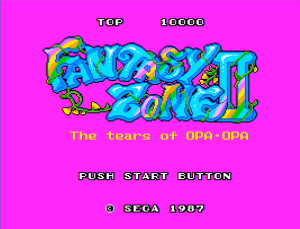
Fantasy Zone’s sequel was only released on the Master System– until M2’s arcade conversion that came years after the original game. This home console exclusive shares gameplay similarities to the arcade original with an emphasis on exploration. You’re once again tasked to hunt down enemy basis to eventually fight against a boss, but levels are broken up into sections that are connected together with warp gates. You can now find power-ups hidden in levels as well as have the ability to enter a shop anytime you find a shop cloud without it disappearing. The trade off being that levels can become more tedious as you won’t have a radar to track down enemy bases to take down. You’ll also need to hunt down a red warp gate to fight a boss once you destroy the enemy bases in a level. If you happen to lose a life you’ll restart the level without any power-ups leaving you to repurchase your items. To make things easier, Opa-Opa has the ability to absorb shots thanks to the added power meter, however collisions with enemies still results in one-hit deaths.You won’t find a more colorful title on the Master System even though it’s graphical capabilities cannot match a SEGA System 16 arcade unit.
*This game supports FM Synthesis sound.
[Fantasy Zone II: The Tears of Opa-Opa SEGA Retro Article]
Secret Command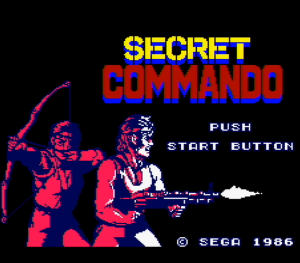
Secret Command is the only import title available from the Master System category. However the game has several names attached to it based on what region you’re in. In Japan it’s known as Ashura while in America it was tied to the Rambo license and released as Rambo: First Blood Part II. Being the only version of the game in English and not tied to a non-SEGA property the European version is known as Secret Command, or Secret Commando as it says on the title screen. It’s an overhead shooter for up to two players simultaneously where you can only fire forwards or at an angle marching forward in the heat of war. You can also lob arrow-grenades in order to take out heavier artillery. A pretty straight-forward game although can be pretty tough. Keep in mind a second player can join in only during the first two rounds of the game.
[Secret Command SEGA Retro Article]
Virtual Console Arcade Games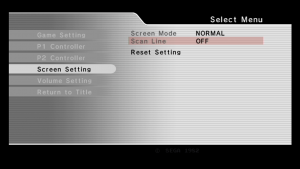
Near the end of the Wii’s lifespan Nintendo’s last ‘console’ was in fact dedicated to arcade games. They didn’t supply any of their own games on the service, instead leaving it up to third parties to fill the void with SEGA at the front lines which unfortunately means the ones handling the conversion process wasn’t exactly consistent. SEGA’s arcade output usually doesn’t see a release outside of game compilations. Even then they can vary in quality depending on the developer. Luckily all of SEGA’s titles on Virtual Console are developed by M2 and received the treatment of customization options you would want.
M2’s SEGA arcade releases allow you to map your controller how you see fit as well as provide several screen orientation options to accommodate for the varying resolutions arcade games originally had for CRTs. This is especially important for games that originally had vertical screen output.
Zaxxon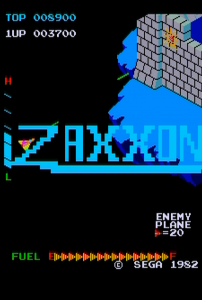
One of SEGA’s earliest breakthroughs in the arcade industry happens to be from the developers of the original Donkey Kong arcade game. Zaxxon’s isometric perspective provided the depth you normally don’t get in flat 2D shooters especially at the time. Players had to adjust their ship’s pitch and yaw to fly around walls, missiles and laser-grid fields as well as dodge enemy fire while in the depths of space. The added depth gives a better illusion of flying around that you did not see too often with 2D shooters at the time with very few games matching it’s style even years after the fact. The game saw numerous conversions on other platforms including a Master System port that’s also available on the Virtual Console, however with the availability of the arcade version may only see benefit from those who wants to collect SEGA titles on every platform. Because of the unusual screen resolution for consumer televisions the graphics appear a bit blurry, however this release includes video options such as vertical “tate” video options with scanlines available for those running the game in progressive video modes or modes suited for EDTV/HDTVs. Wii U owners may want to look into the GamePad’s video output feature that can give you a potential “mini arcade” setup. Check out the Video Options section below for more information.
Wonder Boy in Monster Land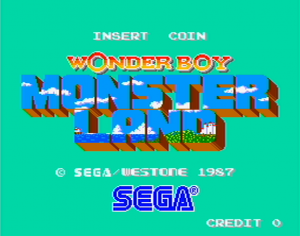
The sequel to Wonder Boy comes as a platformer-RPG gameplay hybrid. This translated version of the arcade original was slated for release but only came out on consoles when released outside of Japan. This was later repurposed for Wonder Boy/Monster World collections released on PlayStation 3 and Xbox 360 but was released as a stand alone title for the Wii Virtual Console. There are a few notable changes from the original game such as red crosses replaced with ‘H’ symbols due to copyright disputes. The game branches outward with multiple ways to complete levels by hunting monsters, collecting gold and buying gear to better suit your play style without being overwhelming. There is a time limit that drains your health overtime if you’re not moving forward. You can also run into taverns to learn about ‘gossip’ and secrets within the world while you hunt down monsters to progress forward. Levels offer a wider variety compared to the original Wonder Boy game from towns to caves even to a mechanized fortress at the end of the game! While the Master System version is also available on the Virtual Console, this is the better looking of the two and even includes an alternating two player mode if you’re into that sort of thing.
[Wonder Boy in Monster Land SEGA Retro Article]
Wii Features and Video Options
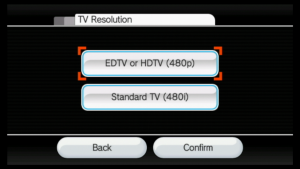 One of the reasons to stick to official distribution is that you’re basically buying into a service that is guaranteed to work with little setup on your behalf as possible. No need to fiddle with emulator settings, no tedious controller configurations and good performance. The Wii was designed to be the middle of the road between standard definition CRTs and then-early adopters of High Definition Televisions. Oh and there’s support for an Enhanced Definition EDTVs if you happened to get stuck with one of those. These days there’s almost no need to stick to composite video output, the lowest video output the Wii supports, but if you want to stick to those options for nostalgia’s sake, the Wii supports those output methods right out of the box. As time went on Nintendo put out a few revisions to their console in order to reduce cost as their customers transitioned from their previous console, the GameCube. Depending on what system you have or what you are looking to buy before the online store closure you should consider what system features you are looking for.
One of the reasons to stick to official distribution is that you’re basically buying into a service that is guaranteed to work with little setup on your behalf as possible. No need to fiddle with emulator settings, no tedious controller configurations and good performance. The Wii was designed to be the middle of the road between standard definition CRTs and then-early adopters of High Definition Televisions. Oh and there’s support for an Enhanced Definition EDTVs if you happened to get stuck with one of those. These days there’s almost no need to stick to composite video output, the lowest video output the Wii supports, but if you want to stick to those options for nostalgia’s sake, the Wii supports those output methods right out of the box. As time went on Nintendo put out a few revisions to their console in order to reduce cost as their customers transitioned from their previous console, the GameCube. Depending on what system you have or what you are looking to buy before the online store closure you should consider what system features you are looking for.
These older games were developed with older television sets in mind and work had to be done to do away with overscan, appropriately scale the picture to avoid pixel shimmering and reduce flashing colors to avoid imagery to help those with epilepsy. As noted in the previous article, M2 handled the emulation for all SEGA Virtual Console releases. This means all Mega Drive, Genesis, Master System and Arcade games were given care to display in all available video modes with limited to no changes. Some releases do have to deal with oddball resolutions that won’t scale properly, such as the arcade games, meaning some releases could display with pixel interpolation to soften the image and mask pixel shimmering.
Make note of the model of Wii you’re looking to purchase as this may limit functionality available to you such support for GameCube games and accessories, video outputs and network functionality. Without a network capable Wii, you won’t be able to access the store otherwise! Learn more at Nintendo’s official website for further support.
- RVL-001 – The original Wii system revision since launch of 2006, features GameCube controller inputs and disc support. Supports all video inputs. Can be identified with the Wii logo appearing parallel to the system when it’s standing vertically.
- RVL-101 – On October of 2011 Nintendo released a revised Wii system with GameCube inputs and functionality removed. Supports all video inputs. These can be identified with the Wii logo appearing parallel to the system when it’s standing horizontally as well as missing GameCube inputs.
- RVL-201 – The Wii Mini, appearing smaller with a red and black shell should be avoided not only because it has no network functionality, it only supports composite video. The lack of GameCube games and accessories and removed SD card inputs make it the least capable Wii console to own. Avoid this revision.
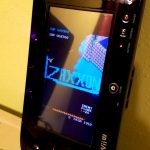 WUP-001 and WUP-101 – Not only does the Wii U support all video inputs and cables from older Wii consoles, the Wii U also has the benefit of displaying through HDMI as well as on the Wii U GamePad when not displaying on a TV. The GamePad cannot be used to control games but works well as a portable television. All Wii game discs and Wii Shop purchases work in the system’s Wii Mode. This means your Wii U will act like a Wii as if it was just a Wii console. Wii Points in the Wii Shop are completely separate from all Nintendo eShop purchases. No matter whether you get the 8GB or 32GB systems, the Wii mode is still limited to the 512MB of flash memory as well as the SD card slot. Plus no GameCube games, accessories or Wii U USB accessories are supported. So no external hard drives and no Wii U GameCube controller adapters. Finally Virtual Console purchases can be upgraded to Wii U versions if you purchase games from the Wii Shop, but Wii U Virtual Console does not feature any games from SEGA’s Virtual Console lineup.
WUP-001 and WUP-101 – Not only does the Wii U support all video inputs and cables from older Wii consoles, the Wii U also has the benefit of displaying through HDMI as well as on the Wii U GamePad when not displaying on a TV. The GamePad cannot be used to control games but works well as a portable television. All Wii game discs and Wii Shop purchases work in the system’s Wii Mode. This means your Wii U will act like a Wii as if it was just a Wii console. Wii Points in the Wii Shop are completely separate from all Nintendo eShop purchases. No matter whether you get the 8GB or 32GB systems, the Wii mode is still limited to the 512MB of flash memory as well as the SD card slot. Plus no GameCube games, accessories or Wii U USB accessories are supported. So no external hard drives and no Wii U GameCube controller adapters. Finally Virtual Console purchases can be upgraded to Wii U versions if you purchase games from the Wii Shop, but Wii U Virtual Console does not feature any games from SEGA’s Virtual Console lineup.
The Wii primarily supports two video modes; 480i and 480p. The two video formats, interlaced and progressive determine the image is processed to your display.
- Interlaced means your display will update half of the screen on a line-by-line basis. When playing on a CRT with scanlines, the effect is masked leaving an detailed image but on an HDTV you are likely to experience combing artifacts, or streaking lines on moving objects. You can make use of a display or scaler that can deinterlace the image but you are probably better off using progressive display modes.
- Progressive means all pixels on a display are updated at the same time. These days modern displays will work and display better with progressive display modes. CRTs are unable to display progressive resolutions made for HDTVs as they’re not fast enough to process the image. Displays that can support these modes don’t suffer from image artifacting and don’t have to do anything to process the image.
The Wii will lock the display at these resolutions because if it were to change for high definition displays they are likely to lose sync then reprocess the sync to display the image again. All Virtual Console games support 480i as well as 480p video modes in NTSC regions. Since these games originally displayed at a lower resolution video standard, all games are upscaled to display at a higher resolution while trying to look as close to the original games as possible. So if you were to jump between the two player modes of Sonic the Hedgehog 2 you won’t lose the display as the Virtual Console emulator switches between video modes.
Games on the Wii display at 480i and 480p display modes that the Wii supports. You can change the options in the settings menu that your display supports. All network capable Wii consoles support composite, S-Video and component video outputs supporting 480i video outputs. PAL users can also take advantage of RGB SCART video cables which provide superior analogue video compared to S-video and composite. The Wii also supports YPbPr component video that can display in 480i as well as 480p.
There wouldn’t be any real benefit to not using 480p modes if it wasn’t for one special trick the Virtual Console carries. Certain titles actually feature a hidden 240p video mode forcing games to display in their native resolution. When the system is set in 480i mode, you can enter a button “code” to activate this feature. Keep in mind this will only work on Wii systems that can display 480i, not a Wii U console running in Wii Mode. Even when using component video output, so long as your system is set to display in 480i you can use this feature. By attaching a nunchuck accessory after booting up a VC game, press the ‘Home’ button to bring up the Wii Menu and select the “Operations Manual.” Then hold down the A, 1 and Z buttons on the Wii Remote and Nunchuck at the same time. You should then hear a signal that means all supported Virtual Console games will then default to the lower resolution mode. To change back to the previous setting go back to the Operations Manual with a Wii Remote and Nunchuck attached then hold the A, 2 and Z buttons at the same time to hear the confirmation. Not all Virtual Console games will support this video mode, however it appears that all SEGA related Virtual Console releases do support these video options. To make sure the game you’re looking for supports this mode, be sure to check out this compatibility list. For a more direct comparisson to real hardware, check out RetroRGB’s article on the Wii’s 240p video mode.
[What is the Difference between the Models of Wii Consoles? – Nintendo of America Support]
[Wii Virtual Console Games vs. the Originals – RetroRGB]
Next time we will take a look at a handful of WiiWare games, console ports and SEGA-related developers you should look out for. Also we’ll talk a bit about backing up your content. With access to the store being removed next year you’ll need to look into options to preserve your purchases.
Ad:
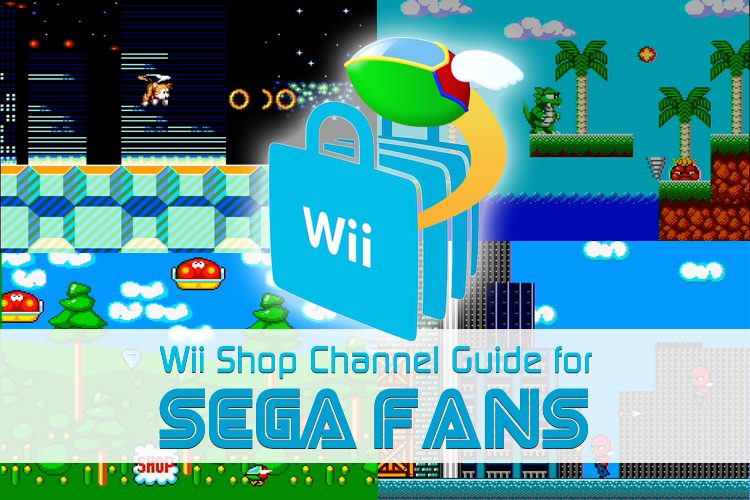
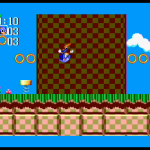
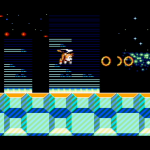
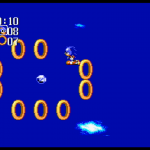
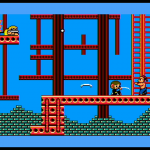
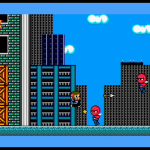
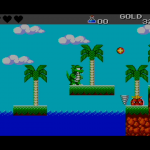
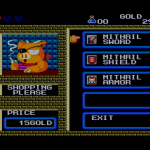
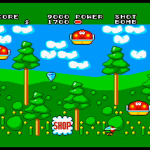

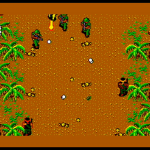
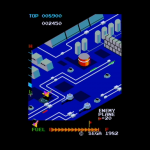
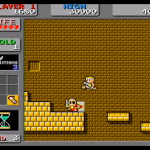
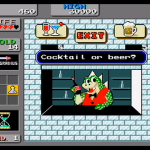
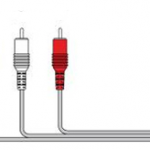
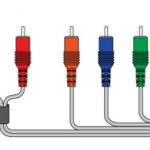
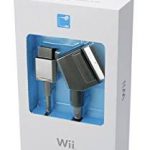
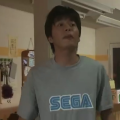

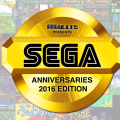

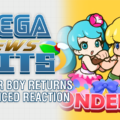
I did not know there is an additional menu with various settings. Thanks for the info!